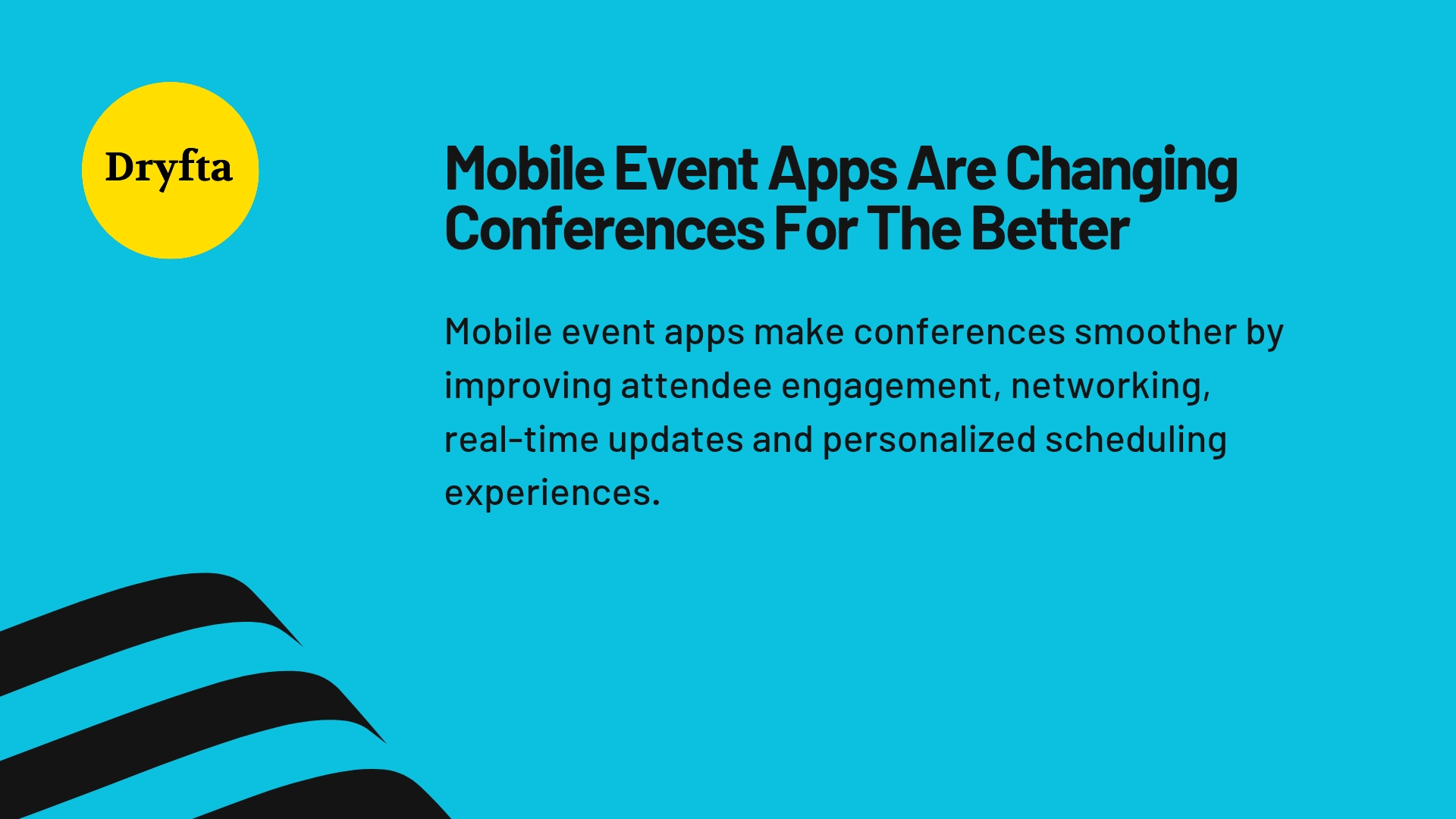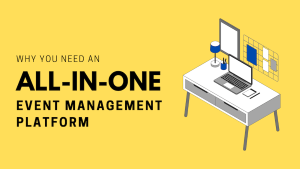
Research conferences have long depended on printed programs that everyone carries until they start to fall apart midway through the event. It made sense once. Before digital tools took over, a neatly bound program felt like a mark of professionalism. Yet, that routine now feels impractical in a world where schedules shift by the hour and participants expect updates at their fingertips. Universities and academic organizations have begun realizing that mobile event apps can do what printed booklets never could: keep pace with the real rhythm of conferences.
At first, many organizers believed these apps were simply an eco-friendly option to cut paper costs. But their usefulness goes far beyond that. Mobile apps are reshaping how research events are designed, experienced and remembered. They limit confusion, offer instant connections across continents and record accurate participation data.
If you want your event to run smoothly and keep attendees engaged, this might be the right time to go mobile. It is worth seeing how these mobile apps have changed the familiar structure of academic conferences.
When Paper Ceases to Work
Printed programs have been a trusted fixture for decades, but they cannot keep up with modern event changes. They go to print weeks before the first presentation, leaving little room for last-minute updates. As a result, talks get canceled or replaced, and room assignments shift, but none of it reaches the final booklet. Attendees spend their first day scribbling edits or wandering around looking for the right hall. Mobile apps correct this instantly.
Information Overload and How Apps Handle It
A typical research conference lasts three or four days but packs in hundreds of lectures, posters, and workshops. Printed versions of these programs end up weighing several tonnes, filled with tiny text blocks that most people never fully read.
Mobile apps manage the same data without confusion. Through search and filtering functions, attendees find topics that matter to their research. Someone interested in molecular biology can instantly pull up all related sessions instead of turning pages for hours. This level of personalization makes planning easier and the event more meaningful. Apps also store far more detail than print allows. Abstracts, biographies, reading links and related sessions appear in one place without wasting space. Users can view only what they need without being buried in irrelevant content.
Networking with Real Results
Conferences are meant for sharing knowledge but also for creating professional connections. Yet meaningful interactions rarely happen without structure. People might have a chance conversation in a corridor, then lose touch before following up. With mobile apps, those connections are easier to make and maintain.
Attendees can browse lists of participants, send short introductions and schedule meetings without worrying about missed opportunities. Many platforms show who attended similar sessions or downloaded similar papers, which helps uncover shared interests naturally. After the conference, these relationships continue through in-app messaging. Participants can exchange research, discuss new projects and stay in touch beyond the event. That ongoing communication turns what could have been a brief meeting into a long-term collaboration.
Real Feedback That Feeds Improvement
Event feedback has traditionally come from surveys filled out after closing sessions. These surveys often suffer from low participation and fading memory, leaving organizers with vague insights. Mobile apps offer ongoing feedback in the form of user behavior. Each time an attendee checks into a session, bookmarks a speaker or downloads material, it generates valuable data. This information reveals which subjects attracted the largest audiences and which sessions lost attention early. Such clarity is hard to achieve through paper surveys.
When connected to conference platforms like Dryfta, the data becomes even more powerful. Organizers can compare attendance across topics, analyze participation for international and local delegates and plan more effective programs based on what actually happened
Doing Good for the Environment
Sustainability has become part of the conversation in nearly every academic space. Conferences generate noticeable waste, from printed booklets to posters and promotional flyers scattered across venues. Moving to mobile apps reduces this almost completely. Instead of physical badges and paper handouts, digital tickets, badges, certifications and online materials replace temporary items that end up in bins after the event. Exhibitor information is shown within the app rather than printed in bulk. Participants may not remark on every change, but many appreciate the collective effect.
Participants recognize and respect these efforts. Many younger researchers notice when conferences make practical choices to reduce waste. Moving to digital systems shows that an event values long-term responsibility more than temporary convenience.
When Systems Work Together
Mobile apps deliver maximum impact when connected to larger event management systems rather than being built as isolated tools. Integration ensures that when someone registers, their preferences automatically flow into the app. If a program chair updates session details, that change appears immediately within attendee schedules.
On platforms like Dryfta, everything functions as one chain. Bookmarks, communication history, and attendance records sync automatically with registration and submission databases. When organizers make a single change in the central system, every participant’s device updates within minutes. It erases duplicate work and prevents missed corrections. These integrations reduce administrative strain and let staff focus on running the actual event instead of managing endless file versions.
Sponsors and Exhibitors Gain a New Channel
For years, sponsors limited their exposure to static banners or booth visits. Today’s exhibitors expect better targeting and measurable engagement. Mobile event apps offer just that. They allow sponsor logos in visible parts of the app, push notifications for special sessions, and interactive exhibitor pages linked to digital brochures or websites.
Organizers also benefit because these placements open new revenue streams. Reliable view counts and click data demonstrate sponsor reach clearly. Exhibitors appreciate this transparency, making it easier to continue or expand support in future editions. Meanwhile, attendees gain from better-curated information that matches their interests instead of generic flyers.
The Direction of Academic Events
The conversation about mobile apps in academia is no longer about possibility. It is about timing and proper implementation. The assumption that researchers prefer traditional formats is fading quickly. Costs have dropped, usability has improved and expectations have changed. Conferences that cling to printed programs may soon feel outdated.
Today’s participants expect updates on their phones just as they expect journal alerts or institutional notifications. They value time-saving and instant information over bulky handouts that age within hours. Organizers who accept this shift early will lead by efficiency and participant satisfaction.
The evidence is already visible: higher engagement, fewer administrative errors and better-organized content. Mobile technology is not the future. It is already standard infrastructure for successful academic events.
Taking the Next Step
If you organize a conference and still rely on printed guides, ask what issues trouble you most.
Frequent schedule errors?
Struggles with attendee engagement?
Weak insight into what worked?
Each of these finds a direct fix through mobile technology and reduces when you introduce a well-designed mobile app. Choose platforms built for scholarly settings. Tools like Dryfta recognize the complexity of multi-track schedules, abstract submissions and academic networking. Our systems are crafted specifically for research communities.
The message is simple. Academic meetings are now progressively on the path to becoming smarter, faster and more connected through mobile apps. Organizers who adapt gain happy participants, lower costs and cleaner operations. Those who resist end up watching attendance slip toward events that have already embraced the digital shift. The revolution of mobile apps in event management is happening now and it is entirely within reach. The change is neither theoretical nor distant, it’s present now and it is practical. Download Dryfta’s mobile event app for a seamless event experience for your attendees!




